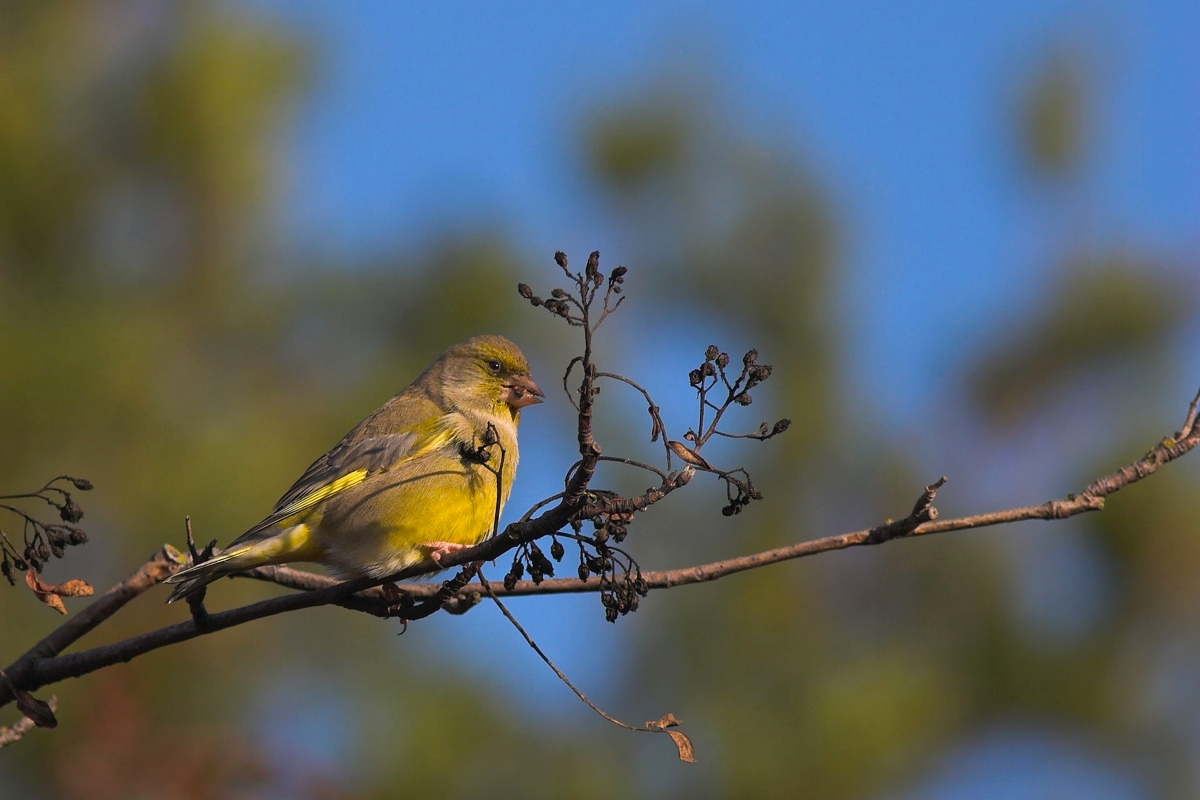The European greenfinch, or just greenfinch (Chloris chloris), is a small passerine bird in the finch family Fringillidae.
This bird is widespread throughout Europe, north Africa and south west Asia. It is mainly resident, but some northernmost populations migrate further south. The greenfinch has also been introduced into both Australia and New Zealand. In Malta, it is considered a prestigious song bird, and it has been trapped for many years. It has been domesticated, and many Maltese people breed them.
Taxonomy
The greenfich was described by Linnaeus in 1758 in the 10th edition of his Systema Naturae under the binomial name of Loxia chloris. The scientific name is from khloris, the Ancient Greek name for this bird, from khloros, "green".
The finch family, Fringillidae, is divided into two subfamilies, the Carduelinae, containing around 28 genera with 141 species and the Fringillinae containing a single genus, Fringilla, with 3 species. The finch family are all seed-eaters with stout conical bills. They have similar skull morphologies, nine large primaries, twelve tail feathers and no crop. In all species the female bird builds the nest, incubates the eggs and broods the young. Fringilline finches raise their young almost entirely on arthropods while the cardueline finches raise their young on regurgitated seeds.
Phylogenetic analysis based on DNA sequence data indicated that the greenfinches were not closely related to other members of the genus Carduelis. They have therefore been placed in a separate genus Chloris.
Description
The greenfinch is 15 cm (5.9 in) long with a wing span of 24.5 to 27.5 cm (9.6 to 10.8 in). It is similar in size and shape to a house sparrow, but is mainly green, with yellow in the wings and tail. The female and young birds are duller and have brown tones on the back. The bill is thick and conical.[9] The song contains a lot of trilling twitters interspersed with wheezes, and the male has a "butterfly" display flight.
Behaviour and ecology
Woodland edges, farmland hedges and gardens with relatively thick vegetation are favoured for breeding. It nests in trees or bushes, laying 3 to 6 Eggs.
This species can form large flocks outside the breeding season, sometimes mixing with other finches and buntings. They feed largely on seeds, but also take berries.
Reproduction
Breeding season occurs in spring, starting in the second half of March, until June, with fledging young in early July. Incubation lasts about 13–14 days, by the female. Male feeds her at the nest during this period. Chicks are covered with thick, long, greyish-white down at hatching. They are fed on insect larvae by both adults during the first days, and later, by frequent regurgitated yellowish past of seeds. They leave the nest about 13 days later but they are not able to fly. Usually, they fledge 16–18 days after hatching. This species produces two or three broods per year.


